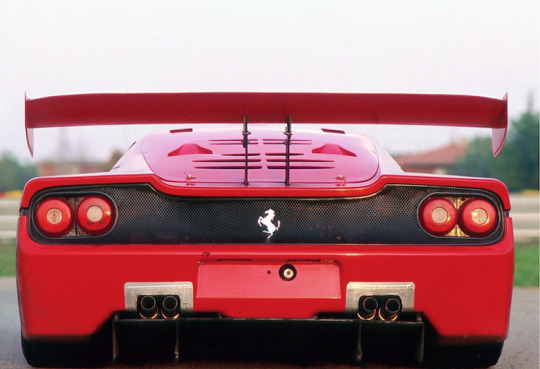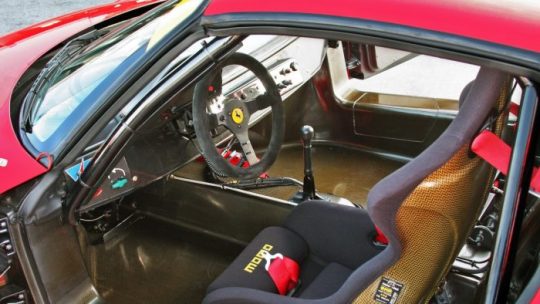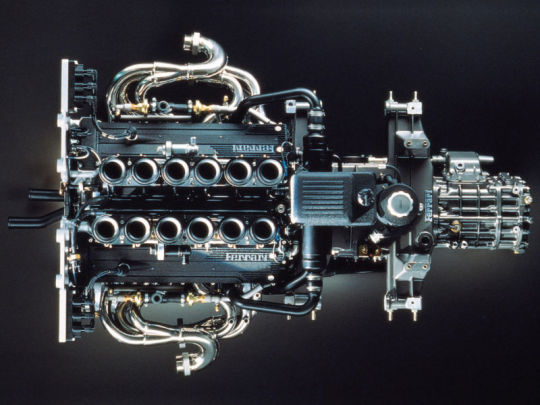#class: gt1
Explore tagged Tumblr posts
Text




#poll#smash or pass#smash or pass poll#tumblr polls#class: gt1#timeline: 1990s#porsche 911 gt1#le mans prototype#class: supercars
8 notes
·
View notes
Text

8 notes
·
View notes
Text
24H of Le Mans: The last few times a car was forced to compete with only two drivers

With the whole motorsport fandom frantically talking about the possibility of Drugovich missing Le Mans, it reminded me of this story.
While I do not think that the 311 will only run with two drivers, as there are several drivers with recent top class experience at Le Mans (Alex Sims for example that raced this car at Le Mans in '23). And there is still quite some time before race week. The #14 entry of Kolles was forced to only race with two drivers as disaster struck mere minutes before the race.
André Lotterer, Charles Swolsman & Narain Karthikeyan (as pictured above in order), were set to compete in the race's 2009 edition. The team qualified 14th overall. Narain Karthikeyan was set to start the race, but quickly had to visit the restroom before the race would go underway.
With just 10 minutes left to go, he jumped over the pit wall to enter the pit lane. But he tripped, and fell dislocating his left shoulder. Below, a recording of the broadcast as they found out what happened.
Karthikeyan was immediately seen by the Audi doctor who re-located his shoulder and put it in a sling.The Audi doctor then cleared him the race, but the doctor at the circuit did not. Which meant Swolsman and Lotterer would have to complete the race with each other.
A few other cars were also left without a third driver, the eventual winner in GT1. The #63 Corvette of Magnussen, O'Connel & Garcia, was only able to utilize Magnussen during the first half of the race as he fell sick during the latter half. And the #009 entry of Hall, Primat & Kox had to miss out on Hall for the latter half of the race. Stuart Hall, was involved in an accident with the #26 LMP2. And while he initially was allowed to continue, the ACO deemed the incident his fault, and he was penalised for it. A heavy penalty at that as he was excluded from the race.
More recently, in 2014, the #79 Porsche was entered in the GTE-Am class. Its bronze driver, Bret Curtis, crashed the car during qualifying. The chassis was irreparable and Curtis was hospitalized. The team managed to find a new chassis but their replacement bronze driver, Sebastien Crubile was denied by the ACO to take part in the race as he did not have any night time driving laps.
This meant Jeroen Bleekemolen and Cooper MacNeil would have to drive the race without a third driver. As they were both Pros they were moved to the GTE-Pro class and would eventually finish the race in the top 5.

A similar case came relatively recently when Philippe Cimadomo was excluded from the 2022 24H of Le Mans due to a concern for safety.

For a moment it seemed like the car would not be able to compete in the race due to this but Nyck de Vries was called up to compete in the race. This meant the car moved up from LMP2 Pro/Am to LMP2

A substitute driver is defined in the Le Mans regulations as only being allowed after the opening of scrutineering if due to force majeure. But the replacement driver has to conform to these regulations as written below.

#my keyboard broke while writing this so it's a bit messy cuz i started then took a huge break to cry about my keyboard and then finished#while the original idea was kinda gone#anyway#24h le mans#wec#racing#24hLMResource
36 notes
·
View notes
Text
















1997 Porsche GT1 Rennversion !
The car’s motorsport debut was at the 1997 FIA GT Championship under the banner of the Rook Racing Team. Later that year, it qualified in 11th place at the 24 Hours of Le Mans with Rook teammates Stéphane Ortelli, Allan McNish, and Karl Wendlinger, but failed to finish the actual race.
Greater success was found with Rohr Racing, as it was piloted to four wins and helped contribute to the team claiming the crown for the 1997 IMSA GTS-1 class.
Courtesy: Broad Arrow Auction
#art#design#sportcars#sportcar#supercars#supercar#race car#racing#porsche#GT1#porsche 911#rennversion#luxurycars#luxueycar#rook racing team#le mans#rohr racing#broadarrowauction#motorlux#iconic car
45 notes
·
View notes
Text




Porsche 911 Carrera GTS "Le Mans Centenaire Edition," 2023. A special edition of 72 cars for France inspired by Porsche's 356 SL and 911 GT1 Le Mans race cars. The cars honour the centenary of the 24 Hours of Le Mans. The run of 72 car is a tribute to Porsche’s 72 years of continuous presence in the race during which it achieved 19 overall wins and 110 class wins.
#Porsche#Porsche 911 Carrera GTS#Porsche 911 Carrera GTS “Le Mans Centenaire Edition”#24 hours of le mans#tribute car#special edition#limited edition#French market#100 years#2023#Le Mans edition
158 notes
·
View notes
Text
An Overview of 75 Years of Racing Triumphs for Porsche

Porsche and racing have had a strong link for 75 years. The German automaker has been a dominant force on the track, racking up victories and pushing the boundaries of automotive technology. Several iconic moments and drivers define Porsche's rich racing history.
Porsche's early strides in car racing began in the late 1940s. The legend began in 1948 with the birth of the Porsche 356. The car established the Porsche brand and laid the foundation for future racing success. Three years later, Porsche secured its first major win with a class victory at the prestigious 24 Hours of Le Mans. The victory showcased the car's endurance and performance.
Then, the 1950s saw Porsche continue its ascent in motorsports. Drivers like Gilberte Thirion carved their names in racing history. Victories at legendary races like the Carrera Panamericana and Targa Florio cemented Porsche's reputation as a builder of competitive sports cars.
Next, the 1960s marked a golden age for Porsche racing. The arrival of the iconic 911 brought a street legend and a dominant force on the track. Porsche's first Formula One win in 1962 with the 804 further solidified its engineering prowess. Le Mans remained a particular focus, with Hans Herrmann's near-miss in 1969 followed by a dream come true in 1970 - Porsche's first overall victory at the grueling 24-hour race.
Over the following forty years, Porsche continued its constant innovation and success. In the 1980s, the 956, featuring a revolutionary monocoque chassis, dominated Le Mans for an unprecedented six years straight. The partnership with McLaren to develop the TAG Turbo engine further demonstrated Porsche's ability to push boundaries. Victories in unexpected arenas like the Paris-Dakar Rally with the 953 and 959 showcased the versatility of Porsche engineering.
The 1990s saw the birth of the Porsche Carrera Cup, a one-make series that continues to nurture aspiring drivers today. Le Mans victories continued with the 911 GT1 in 1998, a testament to the enduring legacy of the 911 platform.
In the new millennium, the car manufacturer saw new challenges and triumphs. The American Le Mans Series saw the rise of the RS Spyder prototype, piloted by drivers like Timo Bernhard. In 2017, another incredible feat at Le Mans took place. After falling behind early, the 919 Hybrid staged a remarkable comeback to secure a third consecutive victory. Porsche's racing journey has gone beyond endurance racing. The TAG Heuer Porsche Formula E team's historic one-two finish in Mexico City in 2022 marked a significant achievement in electric racing.
Porsche's racing legacy extends beyond the sheer number of trophies. With its ever-evolving regulations, Le Mans has been a testing ground for groundbreaking technologies. From lightweight materials to turbocharging and advanced aerodynamics, Porsche has consistently used the field of motorsport to develop innovations that trickle down to its production cars. Efficiency has also been a cornerstone of Porsche's racing philosophy.
From early victories in fuel consumption categories to the recent success of the 911 GT3, Porsche has proven that speed and efficiency can coexist, winning awards for fuel consumption in their race cars.
3 notes
·
View notes
Video
youtube
Mercedes Benz CLK GTR C 297 - Full Tech Specs and Performance of 1997 FIA GT Winner
The 1997 Mercedes-Benz CLK GTR is widely regarded as one of the most elegant and advanced GT race cars ever built. Originally designed for the FIA GT Championship, Mercedes was required to produce road-legal versions to comply with homologation rules. The result was a highly exclusive production run: 25 coupes and only 6 roadsters.
The CLK GTR road car was powered by a 6.9-litre naturally aspirated V12 engine developed by AMG. This engine, based on the Mercedes M120 block, produced 612 horsepower at 6,800 rpm and 775 Newton-metres of torque at 5,250 rpm. The engine was mid-mounted longitudinally and paired with a 6-speed sequential manual gearbox operated via paddle shifters. It used a triple-plate carbon clutch and sent power to the rear wheels.
The monocoque chassis was constructed from carbon-fibre and aluminium honeycomb, ensuring extreme rigidity while keeping weight low. The body panels were also made entirely from carbon-fibre reinforced plastic. Overall weight for the coupe was around 1,440 kilograms.
Suspension was double wishbone all around, with push-rod actuated coil-over dampers and anti-roll bars. The braking system featured ventilated carbon-ceramic discs with 6-piston calipers, providing strong and consistent stopping power.
Performance was in line with top-tier race cars. The CLK GTR could accelerate from 0 to 100 km/h in approximately 3.8 seconds and reach a top speed of about 346 km/h. The car rode on 18-inch center-lock magnesium wheels with racing slick-style Michelin tires for the road version. Electronic systems were minimal—there was no traction control or ABS, reflecting the car’s motorsport origins.
The CLK GTR Roadster used the same mechanical platform, with added chassis reinforcement and revised bodywork to accommodate the removable roof. Despite these changes, weight increase was minimal, and performance figures were nearly identical.
On the track, the CLK GTR was built to compete in the 1997 FIA GT Championship as a GT1 class car. Designed and assembled in under 130 days, it made an immediate impact. The car won 6 out of 11 races in its debut season. Mercedes-AMG won both the Constructors’ and Drivers’ Championships, with Bernd Schneider securing the individual title. Other key drivers included Klaus Ludwig and Alexander Wurz.
In 1998, the CLK GTR GT1 car returned for the start of the season and won the first two rounds before being replaced by the CLK LM. These early victories contributed to another successful campaign, helping Mercedes-AMG secure a second consecutive constructors' and drivers' championship.
Even today, the CLK GTR remains one of the rarest and most technically advanced road cars ever produced by Mercedes-Benz, and a defining example of late-1990s GT1-era racing technology.
Mercedes-Benz CLK GTR – Technical Specifications
Mercedes-Benz CLK GTR Coupe Road Legal Version Production 25 units Engine 69L naturally aspirated V12 M120 Power 612 hp at 6800 rpm Torque 775 Nm at 5250 rpm Transmission 6 speed sequential manual Drivetrain Rear wheel drive Chassis Carbon fibre monocoque with aluminium honeycomb Bodywork Carbon fibre reinforced plastic Suspension Double wishbone push rod actuated coil overs Brakes Ventilated carbon ceramic discs with 6 piston calipers Wheels 18 inch center lock magnesium Weight Approx 1440 kg 0 to 100 kmh Around 3,8 seconds Top Speed Around 346 kmh Electronics No ABS or traction control
Mercedes-Benz CLK GTR Roadster Road Legal Version Production 6 units Engine 69L naturally aspirated V12 M120 Power 612 hp at 6800 rpm Torque 775 Nm at 5250 rpm Transmission 6 speed sequential manual Drivetrain Rear wheel drive Chassis Reinforced carbon fibre monocoque Bodywork Carbon fibre with open top configuration Suspension Same as coupe Brakes Same as coupe Wheels Same as coupe Weight Approx 1450 plus kg 0 to 100 kmh Around 3,8 seconds Top Speed Around 340 plus kmh Electronics No ABS or traction control
Mercedes-Benz CLK GTR GT1 Race Car Category FIA GT Championship GT1 Class Engine 60L naturally aspirated V12 AMG built Power Approx 600 to 630 hp race tuned Torque Approx 700 plus Nm Transmission 6 speed sequential racing gearbox Drivetrain Rear wheel drive Chassis Carbon fibre monocoque Bodywork Lightweight carbon fibre with aerodynamic package Suspension Racing spec double wishbone with push rods Brakes Carbon carbon racing brakes Wheels Lightweight racing wheels with center lock hubs Weight Approx 1000 to 1100 kg 0 to 100 kmh Around 3,3 seconds estimated Top Speed Around 330 to 340 kmh depending on setup Electronics Minimal race spec telemetry no driver aids
1 note
·
View note
Video
youtube
Gumball 3000 2013: John Cena's InCENArator
the fastest car on earth and is. needs a fin. and it is on. we say it not hard and yu make it bscure. we do it. now too.and make it but the front will be spandrell type and not glass and up towell up about a foot and half. solid roof. intake ok mb not needed. looks cool. the whole hull exact. fix the cooling make it real no cylinders up but nice black lluvees. the rest its perfet wnow we do this and now too. we made one and it works and is super fast
on a corvette chassis L7
0-60 2.3 seconds
quarter mile 6.3
to speed 1200+ we had it to 3300mph
we make it now. on corvettes we salvageed
Savage Oppress we do have a way to do it yes.
and other models too. this a mega car and a new class.
we do this now
Thor Freya we helepd redesign the gt1 nd this. now we use it
we do and shall
Olympus
they sit squat but we do it and attract need it in our areas and this works. and use it
Thor FReya
good
Hera
0 notes
Text
Cars| Tuthill Porsche Unveils Their GT ONE As An Ode To Racing History
Tuthill Porsche debuted their latest creation at the renowned Monterey Car Week event, that further showcases the automotive engineering powerhouse’s brilliant design and technical expertise. As an ode to the rich history of race cars and specifically the FIA GT1 race class, which dominated at Le Mans in the 1990’s, the GT ONE by Tuthill is proof a great innovation. With only 22 renditions of…
#24H Le Mans#Cars#Design#FIA GT1#Florian Flatau#GT ONE#Monterey Car Week#Porsche#Richard Tuthill#style#Tuthill Porsche
1 note
·
View note
Text
Retour sur les carnets de voyage
Les élèves de la classe de 2de GT1 ont réalisé un carnet de voyage durant l'année scolaire 2022-23, afin de présenter le territoire étudié dans le cadre de l'enseignement optionnel EATDD (Ecologie, Agronomie, Territoire et Développement Durable). D'Ambialet à Rivière (Tarn), découvrons leurs escapades à travers le carnet de Lucile.
youtube
0 notes
Video
youtube
Greetings, BeamNG and Automation enjoyers. Today, I have finished yet another overdue mod. The Fung-Gavril Honrtail GT1 LM. It's not based on any GT1 car in particular. It's just what it would be like if Gavril entered Le Mans in the GT1 class. This car uses a variant of the Gavril "Thunder Dragon" V16 engine known as the "Baby Dragon" which had been reduced to 5.4 litres due to GT1 regulations. So yeah, I finally finished this mod and I posted it on the BeamnNG repository.
Here's the link to the mod if you want to see it. https://www.beamng.com/resources/1997-1998-fung-gavril-horntail-gt1.27442/
0 notes
Text




#poll#smash or pass#smash or pass poll#tumblr polls#class: gt1#timeline: 2000s#class: supercars#timeline: 2010s#lamborghini murciélago r-gt#lamborghini murciélago r-sv
3 notes
·
View notes
Photo
Lanzante Motorsport led the way through the 1995 24 Heures du Mans to win the GT1 class with the BMW V-12 powered N°59 McLaren F1 GTR.

McLaren F1 GTR 01R
59 notes
·
View notes
Note
The SARD MC8?
Bit of an oddball but I do have a couple pics 👍
Only created so they could race in the GT1 class 🏁
8 notes
·
View notes
Text





Ferrari F50 GT, 1996. A racing version of the F50 was developed by Dallara and Michelotto to compete in GT1-class and 3 prototypes were built. They differed from the road version by having a fixed roof, a large rear spoiler with rear diffuser, new front spoiler, adjustable suspension system and Speedline racing alloy wheels with racing slicks. The 4.7 litre V12 engine was tuned to produced 739hp and 10,500rpm. However before the car's raced Ferrari withdrew from the GT1 class in order to concentrate on F1
#Ferrari#Ferrari F50#Ferrari F50 GT#race car#track car#V12#mid-engine#GT1#GT1 racing#prototype#Dallara#Michelotto#1996#1990s
321 notes
·
View notes
Photo






Ferrari F50 GT1
In the mid-1990s, the BMW-powered McLaren F1 GTR was considered the best car ever built. This was unacceptable to Ferrari, who decided to build a completely new racer based on the F50. The naturally aspirated 4.7-litre V12 (Type F130B) derived from Formula 1 was already producing 520 hp in its original form. However, the engineers tuned it up extensively and when they were done, it was making a monstrous 749bhp. It was mated to a heavily modified version of the factory six-speed manual transmission, beefed up to be able to handle the increased power and converted to sequential shifting. The F50 GT1 reached a maximum speed of 376 km/h and a 0 to 100 of 2.9 seconds. Surprising figures at the beginning of the 90s. Unfortunately, in 1996, while the F50 GT was in its final stages of development, the FIA announced that it was scrapping the BPR Global GT Series. The governing body started with a name change to the FIA GT Championship but, more importantly, they also changed the rules, allowing manufacturers competing in the GT1 class to build quasi-prototypes based on 25-unit homologation models. These moves led to the birth of the Porsche 911 GT1 and the Mercedes-Benz CLK GTR, but also made Maranello's new model suddenly obsolete. Enraged by the changes and unwilling to spend any more money on its development, Ferrari eventually dropped out of competition and pulled the plug on the F50 GT program. Of the planned six units, only three were completed and sold to carefully selected customers.
46 notes
·
View notes